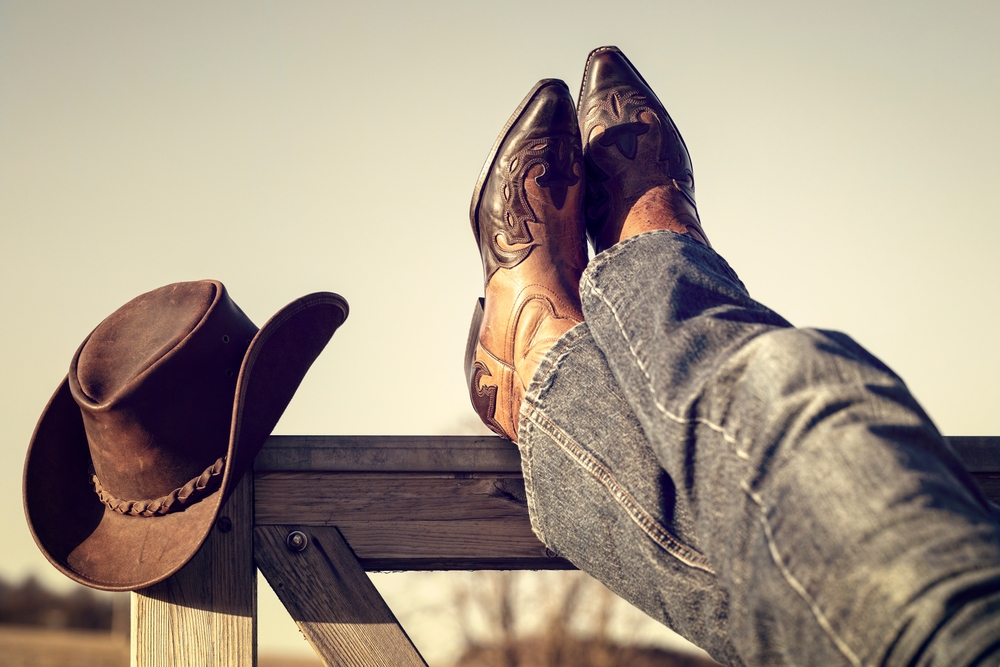Choosing the perfect pair of cowboy boots is about more than just style. It’s a blend of comfort, durability, and personal expression that brings the spirit of the West to your wardrobe. Start by understanding your needs and considering the various materials and boot types available. Whether you prefer the classic cowhide or the exotic charm of crocodile, stingray, and ostrich, there’s a perfect pair waiting for you.
The right fit is crucial. Boots should feel snug but not tight, providing ample room for your toes while ensuring that your heel doesn’t slip too much. Remember that cowboy boots come in a variety of cuts and styles, from bootcut jeans to more formal trousers, giving you multiple options to pair with your new footwear.
Lastly, think about the purpose of your boots. Will they be for casual wear, working on the ranch, or making a fashion statement? Each role might require a different type of leather or boot construction. By considering these factors, you can choose cowboy boots that not only reflect your individuality but also stand the test of time. For additional tips and detailed guidance, you can visit The Ultimate Guide to Choosing the Perfect Cowboy Boots.

Understanding Cowboy Boots
Cowboy boots are more than just footwear; they represent a rich cultural heritage and come in various styles to meet different needs. Knowing their historical significance, styles, and anatomy will help in making an informed choice.
Historical Significance
Cowboy boots have a storied past linked to the American West. Originally designed for cowboys in the 1800s, they were made to endure long hours of riding.
Featuring a distinctive high heel and pointed toe, these boots were practical for riding and prevented slipping through stirrups. The intricate stitching and designs on early boots also served functional purposes, reinforcing the leather and providing durability. Over time, cowboy boots have evolved from practical gear to symbols of Western fashion and culture.
Styles and Variations
Cowboy boots come in various styles, each serving a different purpose. Western boots feature the classic design with a taller shaft and angled heel.
Roper boots have a shorter shaft and a more rounded toe, ideal for rodeo events. Stockman boots combine elements of both, with a lower heel and wider toe box, offering more comfort for all-day wear. Exotic leathers like ostrich and alligator add luxury and durability, while traditional leathers like cowhide and goat remain popular for their versatility and classic appearance.
Anatomy of a Cowboy Boot
The anatomy of a cowboy boot includes several key components. The shaft is the tall part of the boot that goes up the leg, usually adorned with intricate stitching and designs.
The toe shape can vary from pointed to rounded, each offering different levels of comfort and style. The heel type usually falls into categories like roper, walking, or riding, each serving specific functions. The insole provides cushioning for the foot, while the outer sole offers traction and durability. The pull tabs or pull holes make it easier to put on the boots, completing the functional and aesthetic design.
Selecting Your Cowboy Boots
When it comes to selecting cowboy boots, important factors include fit and comfort, material quality, design, and proper maintenance. This ensures you get a pair that suits your style and lasts long.
Fit and Comfort
Fit is paramount when choosing cowboy boots. The boots should snugly hug the instep without feeling tight. The heel should slip slightly during the first wear as new boots typically stretch and mold to your feet.
Consider the arch support and the width of the boot. Some brands offer various widths from narrow to extra wide. Always measure both feet and go with the larger size for optimal comfort.
Material and Quality
Cowboy boots come in a variety of materials such as cowhide, crocodile, stingray, and ostrich. Cowhide is common and durable while exotic leathers are often more sensitive and usually more expensive.
Inspect the quality of the material. Look for consistency in the leather grain and minimal markings. High-quality boots often feature triple or quadruple stitching for added durability.
Design and Craftsmanship
The design of cowboy boots can range from classic to fashionable. Classic boots have a pointed toe and Cuban heel while fashion boots may include decorative elements. Roper boots have a lower heel and rounded toe, making them practical for all-day wear.
Pay attention to craftsmanship. This includes checking the stitching, the balance in the design, and the quality of the soles. Well-crafted boots not only look good but also last longer.
Maintaining Your Boots
Proper maintenance is crucial to extend the life of your cowboy boots. Regularly clean and condition the leather to keep it soft and prevent cracks. Use a soft cloth for cleaning and apply leather conditioner periodically.
Store the boots in a cool, dry place and use boot trees to help maintain their shape. For exotic leathers, consider specialized treatments to keep the material in excellent condition.
By investing time in maintenance, your cowboy boots will retain their quality and charm for years to come.
